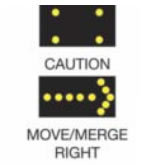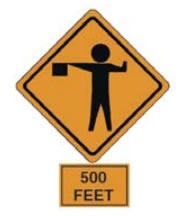Illinois Regulations for Driving in Construction Zones
Illinois laws regulate and detail how drivers must act in traffic. These are so-called “Rules of the Road“, part of which explains how to properly, lawfully and safely drive in construction zones.
When approaching or entering a highway construction or maintenance area (also known as work zones), Illinois law requires motorists to slow down, discontinue wireless/cellphone use (unless using a hands-free device that may include the use of a single-sided headset), yield to any authorized vehicles or workers in the area, change to a lane away from the workers when possible and proceed with caution.
Motorists must obey the posted construction zone speed limit 24 hours a day, seven days a week, regardless of the presence of workers. Standard speed limits may be reduced due to the presence of workers or because normal driving conditions do not exist in a construction zone.
There may be narrow lanes, drop-offs between lanes or at the edge of the pavement, lane closures, construction equipment or obstructions near open lanes of traffic. The speed limit may be further reduced when workers are present.
Construction and Maintenance Signs
Construction and maintenance zone signs alert a driver to changing conditions on the roadway and help keep highway workers safe.
Workers Ahead
These signs are posted far enough ahead to give a driver time to adjust vehicle speed for any unusual conditions. When a driver sees these signs, workers may be working close to the traffic lane. Drivers should follow the signs and adjust vehicle speed to the posted construction-zone speed limit, stay alert and keep a safe distance between their vehicle and all traffic barriers.
Warning Cones, Drums and Barricades
These devices are used to protect a driver from dangerous locations by marking a path for the vehicle to follow in construction and maintenance areas. They also are used to warn motorists of an existing hazard.
Warning Lights and Arrow Boards
 Warning lights help draw a driver’s attention to drums and barricades at night.
Warning lights help draw a driver’s attention to drums and barricades at night.
Arrow boards warn the motorist of an upcoming lane closure, or caution when construction is ahead and the direction to merge or move.
Flagger
 This sign warns there is a flagger ahead. A driver should use caution when approaching a flagger as the individual will be working close to traffic. A driver should slow down and be prepared to obey the signals of the flagger. A driver must stop if signaled to do so.
This sign warns there is a flagger ahead. A driver should use caution when approaching a flagger as the individual will be working close to traffic. A driver should slow down and be prepared to obey the signals of the flagger. A driver must stop if signaled to do so.


